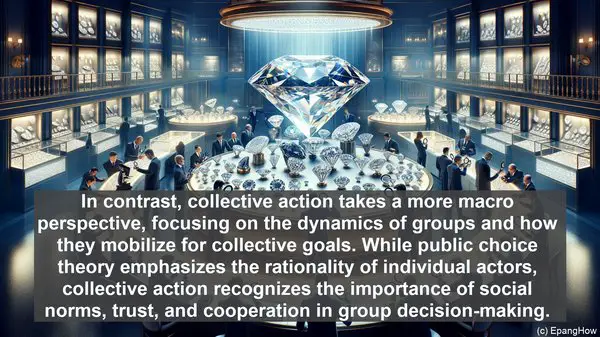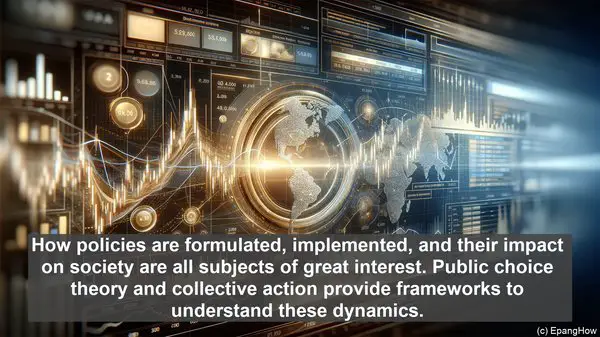Introduction: The Intersection of Politics and Decision-Making
Hello, and welcome to our article on public choice theory and collective action. In the realm of politics, decision-making is a crucial aspect. How policies are formulated, implemented, and their impact on society are all subjects of great interest. Public choice theory and collective action provide frameworks to understand these dynamics. While they both deal with decision-making, they approach it from different angles. Let’s begin by exploring public choice theory.
Public Choice Theory: The Rational Actor in Politics
Public choice theory, also known as the economics of politics, applies economic principles to political decision-making. At its core, it assumes that individuals, including politicians and bureaucrats, act in their self-interest. This self-interest is not necessarily selfishness but rather a rational pursuit of one’s goals. Public choice theory emphasizes that politicians, like any other economic actor, respond to incentives. These incentives can be electoral, financial, or even ideological. By understanding these incentives, public choice theory seeks to predict and explain political behavior.
Collective Action: The Power of the Group
In contrast to public choice theory’s focus on individual decision-making, collective action looks at decision-making as a group phenomenon. It explores how individuals come together to pursue common goals. Collective action recognizes that there are situations where individual actions alone are insufficient to achieve desired outcomes. By coordinating and pooling resources, groups can exert more influence. However, collective action also faces challenges, such as the free-rider problem, where individuals benefit from the group’s efforts without contributing themselves.
Key Differences: Individual vs. Group, Micro vs. Macro
One of the fundamental distinctions between public choice theory and collective action is the level of analysis. Public choice theory primarily operates at the individual level, examining the incentives and decision-making of individual actors. In contrast, collective action takes a more macro perspective, focusing on the dynamics of groups and how they mobilize for collective goals. While public choice theory emphasizes the rationality of individual actors, collective action recognizes the importance of social norms, trust, and cooperation in group decision-making.

Applications: From Policy-Making to Social Movements
Both public choice theory and collective action have practical applications. Public choice theory’s insights can inform policy-making, highlighting the potential unintended consequences of certain decisions or the need for appropriate incentives. On the other hand, collective action is often at the heart of social movements, where individuals come together to advocate for change. Understanding the dynamics of collective action can help in strategizing and mobilizing support effectively.

